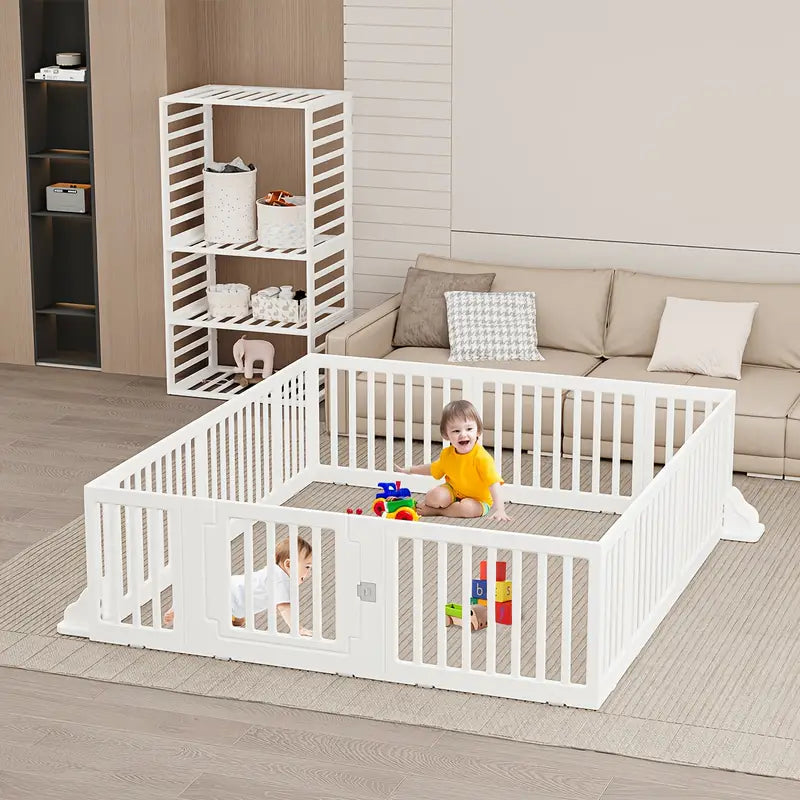Essential Safe Feeding Practices for Infants: A Comprehensive Guide
Key Practices For Safe Feeding Practices For Infants
Exclusive Breastfeeding Recommendations
Okay, so, breastfeeding. It's kind of a big deal. The recommendation is usually exclusive breastfeeding for about the first six months. That means only breast milk – no water, no juice, nothing else (unless a doctor says otherwise, of course). Breast milk has all the nutrients a baby needs during this time, and it also helps protect them from infections. It's not always easy, but it's worth it if you can manage it. If you're struggling, don't hesitate to reach out to a lactation consultant or your healthcare provider. They can offer support and guidance.
Alternatives To Breastfeeding
Breastfeeding isn't always possible or the right choice for everyone, and that's totally okay. There are perfectly good alternatives. Infant formula is designed to mimic breast milk as closely as possible, providing the necessary nutrients for growth and development. There are different types of formula available, so it's best to talk to your pediatrician about which one is best for your baby. Donor breast milk is another option, but it's important to ensure it comes from a reputable source. Remember, safe feeding practices are key, no matter what you choose.
Understanding Infant Formula
Infant formula can be confusing, with all the different types and ingredients. Here's the deal: most formulas are made from cow's milk, but there are also soy-based and hypoallergenic options for babies with allergies or sensitivities. It's super important to follow the instructions on the label for preparing the formula correctly. Too much water can dilute the nutrients, and too little can cause dehydration. Always use clean water and sterilized bottles. And never, ever microwave formula – it can create hot spots that can burn your baby's mouth. If you have questions about choosing the right formula, ask your pediatrician.
It's important to remember that every baby is different, and what works for one may not work for another. Don't compare yourself to other parents, and trust your instincts. If you have any concerns about your baby's feeding, talk to your doctor or a registered dietitian. They can provide personalized advice and support.
Guidelines For Introducing Solid Foods

Introducing solids? It's a big step! It can feel like a minefield of advice, but really, it's about watching your baby and going at their pace. Don't stress too much; you've got this.
Timing For Solid Food Introduction
Okay, so when do you start? Most experts say around six months is the sweet spot. But it's not just about age. Look for these signs:
- Can your baby sit up with minimal support? This is important for swallowing safely.
- Are they showing interest in food? Reaching for your plate, opening their mouth when they see a spoon? That's a good sign.
- Have they lost the tongue-thrust reflex? Meaning they don't automatically push food out of their mouth. This is a key developmental milestone.
Don't rush it! Every baby is different. If they're not ready at six months, wait a week or two and try again. There's no prize for starting early. If you are concerned about when to introduce solids, consult with your pediatrician.
Choosing Safe First Foods
Keep it simple! Single-ingredient purees are the way to go. Think:
- Avocado: Naturally creamy and full of good fats.
- Sweet potato: Mildly sweet and easy to digest.
- Butternut squash: Another good option for a smooth texture.
- Iron-rich foods: Fortified cereals are a good option.
Introduce one new food every 3-5 days. This helps you identify any potential allergies. Look out for rashes, diarrhea, or vomiting. If you see any of these, stop feeding that food and talk to your doctor.
Also, be mindful of potential choking hazards. Avoid things like whole grapes, nuts, popcorn, and hard candies. Cut food into small, manageable pieces.
Gradual Increase In Food Variety
Start small. A teaspoon or two is plenty. Gradually increase the amount as your baby gets used to it. Don't force it! If they turn their head away, don't push it. Try again later.
As they get more comfortable, you can start introducing more flavors and textures. Think about adding things like:
- Fruits: Apples, bananas, pears.
- Vegetables: Green beans, carrots, peas.
- Proteins: Pureed meats, beans, lentils.
| Food Group | Examples | Notes the safe food preparation practices are also important.
Responsive Feeding Techniques
Responsive feeding is all about paying close attention to your baby's cues and responding in a way that meets their needs. It's not just about what you feed them, but how you feed them. It's about creating a positive and trusting feeding relationship from the start. It can be tricky at first, but it gets easier as you learn to understand your baby's unique signals.
Recognizing Hunger Cues
Babies communicate their hunger in different ways, and it's up to us to learn their language. These cues can be subtle at first, but they become more obvious as hunger increases. Here are some common early hunger cues:
- Rooting (turning their head and opening their mouth as if searching for a nipple)
- Sucking on hands or fingers
- Increased alertness or activity
- Bringing hands to mouth
Crying is often a late hunger cue, so it's best to respond before your baby gets to that point. If you miss the early cues, try to calm your baby before offering food. A calm baby will feed better than a frantic one. Learning to recognize these early hunger cues is key to successful responsive feeding.
Encouraging Self-Regulation
Self-regulation is a baby's ability to control how much they eat. Responsive feeding supports this by allowing babies to eat until they are full, without pressure to finish the bottle or plate. Here's how to encourage it:
- Pay attention to fullness cues like slowing down, turning away, or closing their mouth.
- Don't force your baby to eat more than they want.
- Offer food at regular intervals, but let your baby decide how much to eat at each feeding.
- Avoid distractions during feeding so your baby can focus on their internal cues.
Responsive feeding helps babies develop a healthy relationship with food from the beginning. It teaches them to trust their bodies and listen to their hunger and fullness signals. This can set the stage for healthy eating habits later in life.
Building Trust Through Feeding
Feeding is more than just providing nourishment; it's an opportunity to build trust and connection with your baby. When you respond to your baby's needs with sensitivity and care, you create a secure attachment. Here are some ways to build trust through feeding:
- Make eye contact and talk to your baby during feedings.
- Hold your baby close and provide a comfortable feeding position.
- Respond to their cues with patience and understanding.
- Create a calm and relaxing feeding environment.
Trust is built over time through consistent and responsive care. By practicing responsive feeding, you're not only nourishing your baby's body but also nurturing their emotional well-being. If you are having trouble with feeding tips, don't hesitate to reach out to a lactation consultant or your pediatrician.
Maintaining Hygiene During Feeding
It's super important to keep things clean when you're feeding your baby. This helps protect them from germs and keeps them healthy. Let's talk about how to do it right.
Proper Handwashing Techniques
Okay, so, washing your hands might seem obvious, but it's seriously the first line of defense. Wash your hands thoroughly with soap and water before preparing any food or feeding your baby. Make sure you get between your fingers, under your nails, and the backs of your hands. Sing "Happy Birthday" twice – that's about how long you should scrub. It's a small thing that makes a big difference. You should also wash your hands after diaper changes, using the bathroom, or handling anything that could be contaminated. Think of it as a mini-spa treatment for germ-free hands!
Safe Food Preparation Practices
When you're getting food ready for your little one, keep raw and cooked foods separate. Use different cutting boards and utensils to avoid cross-contamination. Cook foods to the right temperature to kill any harmful bacteria. And, really important, don't leave food sitting out at room temperature for too long. Bacteria love to party in warm food. If you're not serving it right away, pop it in the fridge. Also, when in doubt, throw it out. It's better to be safe than sorry. If you're using formula-feeding, make sure you're following the instructions carefully and using safe water.
Cleaning Feeding Equipment
Bottles, nipples, spoons, bowls – anything that touches your baby's mouth needs to be squeaky clean. After each feeding, rinse everything right away to stop milk or food from drying on. Then, wash them in hot, soapy water. You can use a bottle brush to get into all those nooks and crannies. If your baby is under three months old, or has health issues, you might want to sterilize the equipment too. You can do this by boiling everything for five minutes, using a steam sterilizer, or popping them in the dishwasher on the sanitize cycle. Let everything air dry on a clean surface. This helps prevent foodborne illnesses.
Feeding Infants With Special Needs

Adapting Feeding Techniques
When infants have special needs, whether due to prematurity, developmental delays, or medical conditions, standard feeding approaches might not work. It's all about adapting! For example, an infant with reflux issues might need to be fed in a more upright position or require smaller, more frequent meals. Infants with cleft palates may need specialized bottles and nipples to help them feed effectively. The key is to work closely with healthcare professionals to identify the specific challenges and tailor feeding techniques accordingly.
Nutritional Considerations
Infants with special needs often have unique nutritional requirements. Premature babies, for instance, need higher levels of certain nutrients to support their rapid growth and development. Infants with conditions like cystic fibrosis may require enzyme supplements to help them digest food properly. It's super important to consult with a registered dietitian or nutritionist who specializes in pediatric care. They can assess the infant's individual needs and develop a feeding plan that ensures they get all the nutrients they need to thrive. Sometimes, specialized formulas or fortified breast milk are necessary to meet these increased demands.
Support Resources For Parents
Caring for an infant with special needs can be overwhelming, and that includes feeding. Luckily, there are many support resources available to parents. Local hospitals and clinics often offer feeding support groups where parents can connect with others facing similar challenges. Early intervention programs can provide valuable guidance and therapy services. Don't hesitate to reach out to organizations that specialize in your child's specific condition. They can offer information, resources, and emotional support. Remember, you're not alone, and there are people who want to help.
It's okay to feel frustrated or overwhelmed. Seeking support is a sign of strength, not weakness. Connecting with other parents who understand what you're going through can make a huge difference. Remember to take care of yourself, too, so you can be the best caregiver for your little one.
Here are some ways to find support:
- Ask your pediatrician for referrals to local support groups or specialists.
- Search online for organizations related to your child's specific condition.
- Contact early intervention programs in your area.
- Join online forums or social media groups for parents of children with special needs.
Monitoring Infant Growth And Development
It's super important to keep an eye on how your baby is growing and developing. This helps make sure they're getting enough nutrients and are on track. It's not about comparing your baby to others, but more about understanding their individual journey.
Tracking Feeding Milestones
Keeping track of feeding milestones can give you a good idea of how your baby is progressing. It's more than just how much they eat; it's also about their ability to latch, suck, and swallow effectively. Here's a simple way to think about it:
- Early Weeks: Focus on successful latching and milk transfer during breastfeeding or proper bottle feeding techniques.
- Around 6 Months: Note their first experiences with solid foods – purees, single-ingredient options, and how they handle new textures.
- 8-12 Months: Observe their ability to self-feed with finger foods and their interest in a variety of tastes and textures. This is a great time to introduce safe infant feeding practices.
Signs Of Nutritional Deficiencies
Knowing the signs of nutritional deficiencies is key. If you notice any of these, it's always best to chat with your pediatrician.
- Poor Weight Gain: Consistently falling off their growth curve.
- Lethargy: Being unusually tired or uninterested in feeding.
- Developmental Delays: Not reaching milestones like sitting, crawling, or babbling at the expected times.
- Skin Issues: Dry skin, rashes, or other unusual skin conditions.
It's easy to get caught up in worry, but remember that every baby is different. If you have concerns, write them down and bring them up at your next check-up. Don't hesitate to reach out for support from other parents or lactation consultants.
Consulting Healthcare Professionals
Regular check-ups with your pediatrician are vital. They can assess your baby's growth, development, and feeding habits. They can also provide personalized advice and address any concerns you might have. Don't be afraid to ask questions! They are there to help you and your baby thrive. If you are concerned about weight loss, consult with your pediatrician.
Creating A Positive Feeding Environment
Creating a good vibe during feeding times can really impact how your baby feels about food. A relaxed and happy atmosphere makes them more open to trying new things and helps them develop a healthy relationship with eating.
Minimizing Distractions During Meals
Okay, let's be real – screens are everywhere. But during feeding, try to keep them away. No TV, no phones, nothing that pulls their attention away from the food and you. It's about focusing on the experience, the tastes, and the connection. This helps them pay attention to their own hunger and fullness cues, too.
Establishing Routine Feeding Times
Babies thrive on routine, and feeding is no different. It doesn't have to be super rigid, but having some sort of schedule can help. It helps regulate their appetite and makes them feel secure. Think of it as creating a rhythm to their day. It can also help you plan your day better, knowing when those feeding times are likely to happen. A feeding schedule can be a game changer.
Encouraging Family Mealtime
Even if your baby isn't eating the exact same food as everyone else, including them in family mealtimes is a great idea. They get to see everyone else enjoying their food, which can make them more curious and excited about trying new things themselves. Plus, it's just nice to have everyone together. It's a chance for them to pick up on social cues and feel like they're part of the group.
Creating a positive feeding environment is more than just about the food itself; it's about building a loving and supportive relationship with your baby. It's about teaching them to enjoy food and to trust their own bodies. It's about making meal times a happy and stress-free experience for everyone involved. And remember, it's okay if things get messy – that's part of the fun!
Wrapping It Up: Safe Feeding for Your Baby
Feeding your baby can feel like a lot to handle, but it doesn’t have to be. By sticking to the basics—like breastfeeding or using formula, introducing solids at the right time, and keeping things clean—you can make mealtime a lot easier. Remember, every baby is different, so pay attention to what works best for yours. Trust your instincts, and don’t hesitate to ask for help if you need it. With a little patience and practice, you’ll find a routine that suits you and your little one. Safe feeding is all about keeping your baby healthy and happy, and you’re doing great just by being here and learning!






Leave a comment